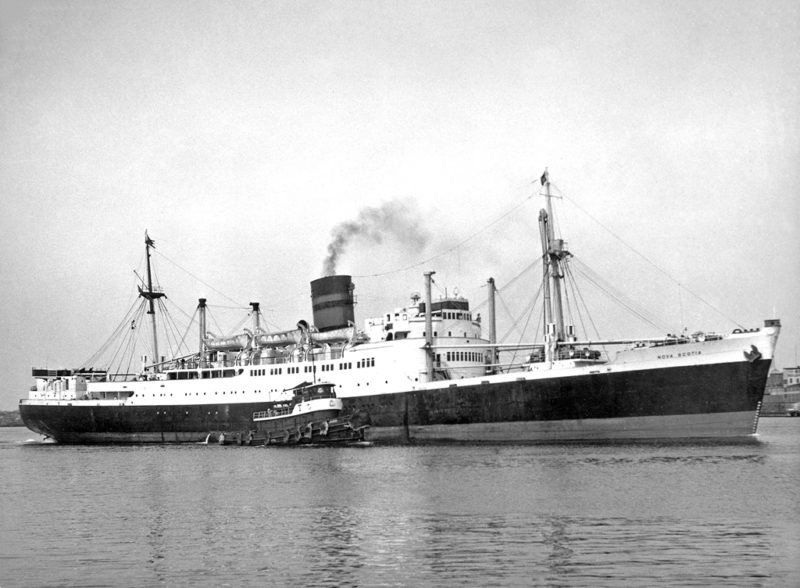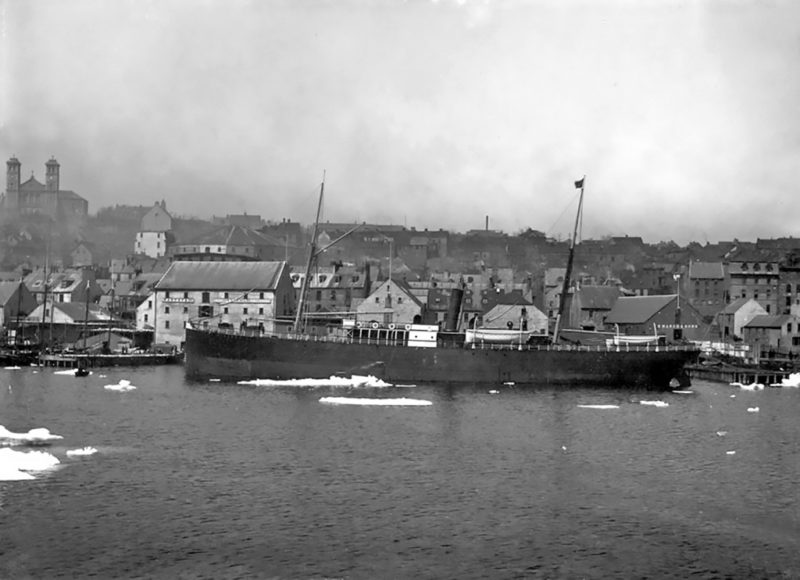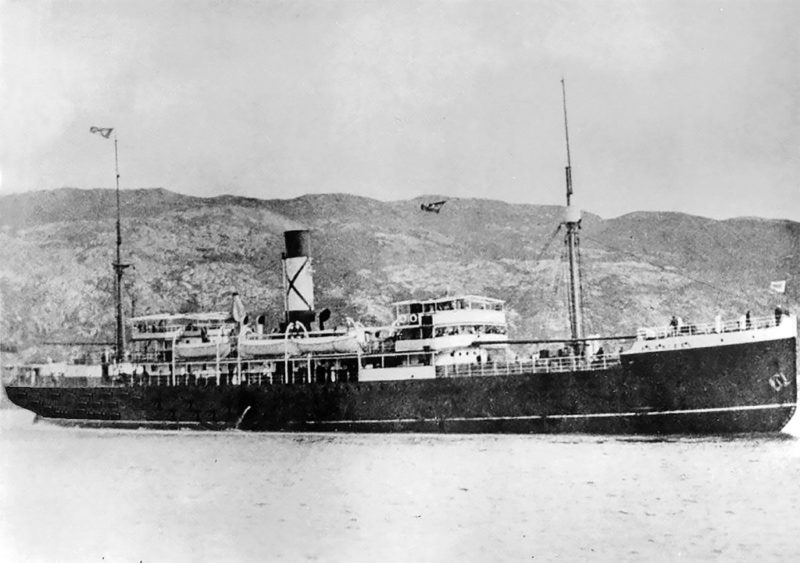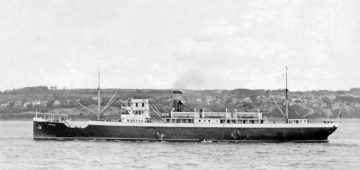
The nine provinces of Canada and two territories were joined in 1949 by a tenth province, that of Newfoundland, which lies to the East of the Gulf of St. Lawrence with the rugged Long Range Mountains forming a backbone to the west coast, and many lakes and indented fjords, and much coniferous forest. The Grand Banks have always supplied plentiful fishing for cod, salmon, halibut and lobster, and there was formerly a big sealing industry. Land based industries include wood pulp, paper making, iron ore and lead, zinc, and copper mining, asbestos manufacture and hydro-electric power. Sea transport to the island, which with Labrador is known as the ‘Golden North’ of Canada, dates back more than a century to the 1820s and 1830s with schooners carrying passengers to the island.
The total population of Newfoundland and Labrador is only half a million souls spread over an enormous area, and they have to endure a severe climate with harsh winter gales and deep snow. Viking settlements have been painstakingly unearthed on both the mainland and Newfoundland shores of Belle Ile Strait, indicating that the Norsemen were the first European settlers to reach the Americas. Separation lanes today exist for shipping to Belle Ile Strait and are routed to the north of Anticosti Island in the Gulf of St. Lawrence, with the main shipping separation lane for St. John’s, capital of Newfoundland, as well as all traffic to Prince Edward Island, Cape Breton, Nova Scotia and deep sea destinations are routed to the Cabot Strait to the south of Anticosti Island. The main passenger shipping companies that served Newfound-land in the past are now given.
RED CROSS LINE
Charles Tricks Bowring and his son Benjamin Bowring set up C.T. Bowring & Company in July 1841 based on the slaughter of seals in Newfoundland. The first steam sealer was purchased in 1865, and a sailing fleet carrying passengers was then operated in the Transatlantic trades. By the time of the death of Charles Tricks Bowring in 1885, a regular passenger service operated from the Tyne to New York, and was being maintained using the first Bowring regular deep sea sister steamers Titania and Juliet of 1,880 grt, with Romeo replacing Titania after her loss in the North Atlantic in January 1882.
The coastal liner service between New York, Halifax (NS) and St. John’s in Newfoundland was begun in 1884 using the Tyne built sisters Miranda and Portia of 1,158 grt with accommodation for sixty First Class passengers, and which became known as the ‘Red Cross Line’ because of the Bowring funnel colours. This service ran until January 1929 when Bowring sold it to the Bermuda & West Indies Steamship Co. Ltd. The steamer Capulet of 1884 continued the Shakespearian theme and was first used in the Transatlantic trade before joining the Red Cross Line with accommodation for sixty passengers. The Red Cross Line was officially the New York, Newfoundland & Halifax Steamship Company, and offered luxury passenger cabins as well as cargo space along the Eastern Seaboard of the U.S.A. and Canada with a one night stay at Halifax (NS). The narrow defile of St. John’s harbour was reached and ships identified themselves by flags or radio, or were identified by spotters and lookouts on the very high Signal Hill shortly before the wharves were reached in the harbour. Flags were raised and cannons fired to warn residents of the imminent arrival of the steamers.


Miranda was lost in 1894 at Sukkertoppen while on a voyage from New York to Greenland, and Portia was lost five years later in July 1899 when wrecked near New York. Portia had carried 23 passengers under Capt. W. J. Farrell and a full crew when she set out from St. John’s for New York on 7th July 1896. Miranda was replaced by the passenger and cargo steamer Silvia, purchased in 1892 by Bowring and used on many services until switched to the Newfoundland route with Harvey & Co. as agents for the Red Cross Line. Return cargoes to New York were iron ore from the mines on Pelley’s Island at Notre Dame Bay in the north of the island and fish of several varieties. Silvia was wrecked in Vineyard Sound near Martha’s Vineyard in Massachusetts in 1908. The German steamer Admiral was sold by the Woermann family of Hamburg to Bowring in 1902 and renamed Rosalind. The average number of passengers per voyage over her ten years of Red Cross Line service before her sale in 1912 to the St. Lawrence Shipping Company of Montréal was 40 passengers, higher in summer and lower in winter.
The passenger and cargo steamer Florizel of 3,081 grt had been built on the Clyde in 1909 by Charles Connell & Company for the Red Cross Line. She was strengthened for navigation in ice, and had the latest radio equipment and submarine signalling apparatus on her bridge. She was also used along with her consorts in early Spring on the annual seal hunt. The average number of her passengers on Red Cross Line service was 30 per voyage, and she was then used as a troop transport during World War I, but was wrecked on Horn Head Point near Cappahayden to the south of St. John’s on 25th February 1918 on Red Cross Line service, her Master having mistaken his position for the turn around Cape Race with the loss of 94 lives out of 78 passengers and 60 crew members after a night and a day waiting for rescue.
The passenger and cargo steamer Stephano of 3,449 grt was built on the Clyde in late 1911 by Charles Connell & Company at Scotstoun for Red Cross Line service, and carried an average of 40 passengers on each of her voyages until she was requisitioned for trooping from Newfoundland to the U.K. in the early part of the war. She sailed from St. John’s for France on 20th March 1915 with 250 troops of ‘D’ Company of the Newfoundland Regiment together with their Commanding Officer and Medical Officer. She was torpedoed and sunk on 8th October 1916 when 2.5 miles ENE of Nantucket Light Vessel while on Red Cross Line service. The crew and passengers were picked up by American destroyers as many of her passengers were American, but they did not interfere or attack the U-boat as America had not joined the war at this point of time.
A twelve day return summer voyage at this time in 1914 was $60 with berth and meals included in a First Class cabin on Red Cross Line service from New York to St. John’s calling at Halifax (NS). This was a luxury service with ships fitted with every possible convenience for the comfort and safety of passengers. The voyage had seven days at sea and two days at St. John’s in Newfoundland and one day at Halifax (NS) to view the beautiful scenery of Nova Scotia and Newfoundland. The steamers sailed from New York at 1100 hours on Saturdays, and passengers could, if they preferred, stay at the comfortable Crosbie Hotel at St. John’s with telephones and hot and cold running water, and great views over ‘The Narrows’.

Subscribe today to read the full article!
Simply click below to subscribe and not only read the full article instantly, but gain unparalleled access to the specialist magazine for shipping enthusiasts.





Comments
Sorry, comments are closed for this item